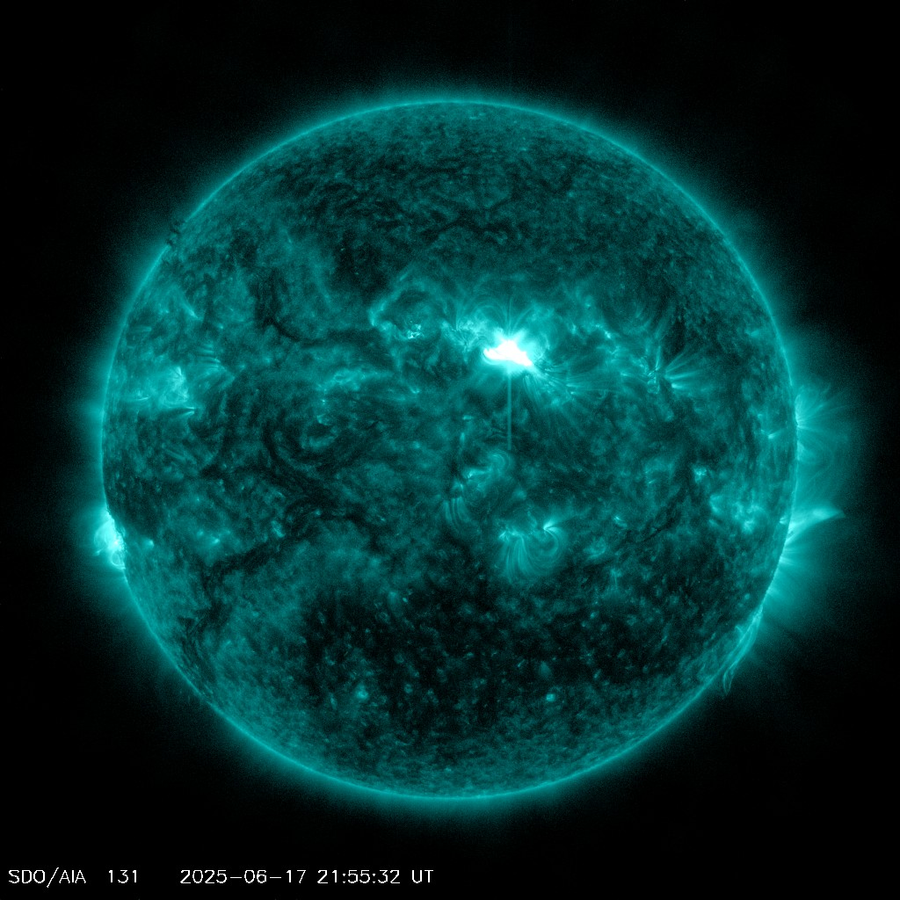A major Powerful Solar Flare Hits Earth Again in 2025 , marking the second such incident this week. This unexpected burst of energy from the Sun disrupted GPS services and radio communications across large parts of the United States, especially in the early hours of June 19. Scientists had been monitoring increased solar activity, but the speed and strength of this flare took many by surprise.
Table of Contents
Second Major Flare in One Week Raises Alarms
Within just two days, Earth has faced two high-intensity flares — something space weather scientists rarely witness. The recent event was powerful enough to interfere with airline communications and some location-based systems used by vehicles and smartphones.

Though not every region was affected equally, disruptions were widely reported across air traffic control networks and certain satellite-based services. Experts have linked the event to an active sunspot area currently facing Earth, warning that further activity may follow in the coming days.
How Solar Flares Impact Our Daily Life
Solar flares are massive explosions on the surface of the Sun, releasing large amounts of radiation. When these bursts reach Earth, they interact with our magnetic field, sometimes leading to geomagnetic storms. This can interrupt technologies that depend on satellite signals, including navigation apps, aviation systems, and even some power grids.
Thankfully, in this case, no major blackouts were reported, but minor signal drops and temporary service interruptions were confirmed in multiple cities.
Powerful Solar Flare Hits Earth Again in 2025: What This Means Going Forward
The recurrence of solar activity at this level suggests that we may be entering a more volatile period in the Sun’s natural cycle. Known as the “solar maximum,” this phase occurs every 11 years and is marked by increased sunspots, flares, and solar storms.
Agencies like NASA and ISRO have already issued updates urging governments and service providers to stay prepared. Airlines are reviewing flight paths, especially those flying near the poles, where radiation exposure is higher during such events.
Are We in Danger? Here’s What Experts Say
Despite the dramatic nature of solar flares, scientists say that they do not pose a direct risk to humans on the ground. Earth’s magnetic field provides strong protection against most of the harmful radiation.

However, those in orbit — such as astronauts on the International Space Station — may need to take extra precautions during peak flare activity. Satellite operators also often place equipment into safe modes to avoid damage from solar radiation.
Global Space Agencies Increase Monitoring
With two flares happening in such a short time span, observatories around the world are now on high alert. Space weather forecasting centers in the U.S., India, and Europe are watching the Sun closely for signs of additional eruptions.
Some satellites have already begun transmitting limited data to avoid potential corruption from radiation. In addition, backup communication systems are being tested as part of emergency planning.
Public Reaction and Precautionary Measures
As news of the solar flare spread, people across the U.S. took to social media reporting unusual behavior in navigation systems, dropped mobile signals, and slower-than-usual satellite TV services. While the effects were short-lived, they sparked renewed interest in understanding solar storms. Educational institutions and media outlets began sharing guides on what to do during such events. Tech companies and aviation services, meanwhile, are reviewing emergency protocols to handle future disruptions more smoothly and minimize impact on users
Conclusion: A Reminder of Our Solar Connection
This recent flare reminds us how events on the Sun can ripple across our connected world. As a powerful solar flare hits Earth again in 2025, it’s clear that space weather is not just a concern for scientists — it affects aviation, technology, and everyday life.
With more solar activity likely ahead, preparedness and real-time monitoring are essential. For now, most systems are stable, but the potential for more disruption remains, and global agencies are standing by.
For more details read on NASA’s official page.
And to read every day news Do follow our blogs.